Gregor Mendel and his fuchsias
Thursday, July 20, 2023
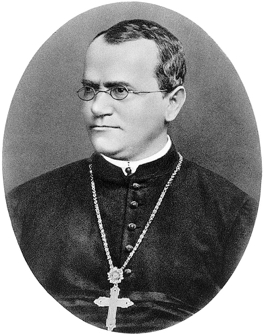
It’s funny how these things sometimes start out. Surely no one at Heizendorf bei Odrau would have thought, for even the slightest moment, that Gregor Mendel would go on to become an Augustinian priest, an abbot, and then the scientist who founded the modern field of genetics by demonstrating inheritance patterns in peas. The results of his experiments eventually led to two generalizations, the Law of Segregation and the Law of Independent Assortment. Together have come to be known as Mendel's Laws of Inheritance. Go Mendel!
As a child, little Johann, as he was baptized, worked in the garden, learned to keep bees, and attended the local primary school. Not all that out of the ordinary for a peasant farmer’s son in Moravia. The farmer’s son proved bright, though, and the teenager was to be sent to the gymnasium in Troppau, at the time the capital of the Austrian province of Silesia (now Opava, Czechia) from 1834-1840. He later attended the Philosophical Institute at Olmütz (now Palacký University, Olomouc, Czechia). There he studied philosophy, practical and theoretical of course, and ethics, mathematics, and physics, too, from 1840-1843.
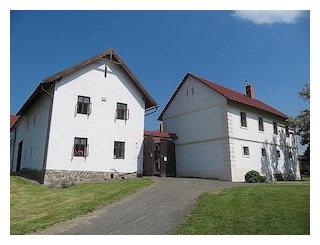
He was barely able to continue even when his younger sister, Theresia, gave him her dowry in support. But there was apparently no hiding from her what her brother was to be. He would later lend his own support back to her three sons, two of whom became doctors. Mendal was also painfully shy and suffered from an absolutely debilitating fear of exams. He would later disastrously fail oral interviews for his formal teaching certificates, twice. Again, he retreated to a sickbed after each embarrassing setback. He would, in fact, never actually be able to pass them.
Mendel did his scientific work at the Augustinian Abbey of St. Thomas in Brünn, the capital of the Austrian province of Moravia (today Brno, Czech Republic). Not cut out to be a farmer, the Abbey would be a godsend to young Mendel. Mendel Sr. expected his only son to take over the farming family’s farm but the younger Mendel instead entered religious life at the Abbey in 1843 as an escape. Leaving his baptismal name behind to take on a new religious one, Gregor Mendel started training for the priesthood. The church offered much-needed financial support to bright young men of Mendel’s talent and station who were in search of an education.
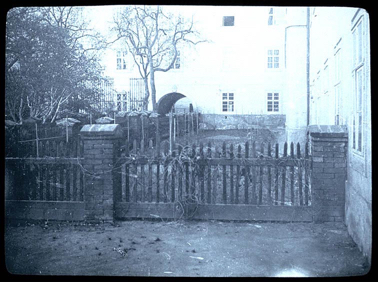
In 1851, the Abbott sent Mendel to pursue further educational studies at the University of Vienna. In Vienna, Mendel majored in mathematics and physics, and attended courses by such renowned professors as Christian Doppler, in experimental physics, and Franz Unger, in the anatomy and physiology of plants. The exposure of his two years at such a world-class university, in the glittering and sophisticated capitol city at the heart of the vast multi-national empire cobbled together by the Hapsburgs, were to be mind-opening and transformative for the simple farmer’s son from Heizendorf bei Odrau. Even if he was supposed to be a priest. With more formal training in hand, scientist Mendel returned to the Abbey in 1854 and was to teach physics and the natural sciences at Brünn’s secondary school until 1868. That year he was elected Abbot after Papp’s death in 1867. Unfortunately, he would never have the freedom from official responsibility for the unrestrained joys of purely scientific work after that.
It was mostly from 1854 to 1864 that Mendel carried out his most important scientific work at the Abbey. There, he tended a garden, occupied a new greenhouse Papp had had built for him, had a weather station, and kept bees. And repeatedly crossed, recrossed and recorded his generations of peas with mathematical precision. Probably through what might have been 300,000 plants in a second sunny garden of the south side of the Abbey. Most of Mendel's published work actually concerned meteorology or bee-keeping. It was only in the early Twentieth Century that his single, seminal publication on those peas, Versuche über Pflanzenhybriden (Experiments in Plant Hybridization) published in 1866, was essentially rediscovered. Under closer examination, he slowly began to be hailed as the Father of Genetics. On the home front, he had already garnered some attention earlier. He was elected vice-president of the Natural Science Society in 1868 and of the Apiculturists in 1871, was granted the Order of Franz Josef in 1872, and was awarded the Medal of the Hietzing Horticultural Society in Vienna, but declined the presidency of the Natural Science Society, in 1882.
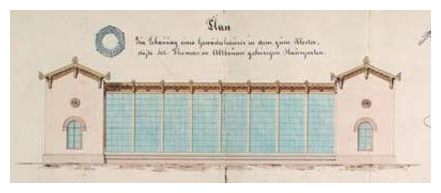
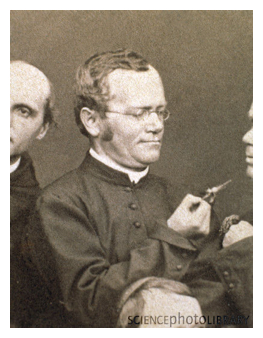
Along the way, Mendel developed a sincere fondness for fuchsias. Mendel and fuchsias? Yes, Mendel and fuchsias. There’s more to his gardening than experiments with peas. It’s not even hard to imagine why. Fuchsias were increasingly popular. They would become one of the most fashionable flowers of the Nineteenth Century. Brünn may have been a provincial city but it also had a vibrant cultural and intellectual life. And it certainly wasn’t immune to elegance and fancy, newly arrived from the more glittering and cosmopolitan capitols of Europe, either. Mendel, after all, even had his own timely copy of Darwin on hand. The Father of Genetics grew fuchsias and even crossed them in his garden at the monastery. His bees would have loved them as well.
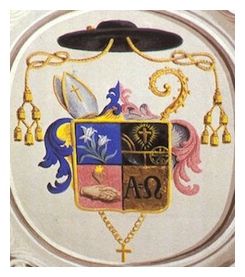
The photo with his fellow friars wasn’t even the only photo in which the shy Mendel purposely posed himself with a fuchsia. In another he again stares at a small fuchsia flower. Fuchsias weren't, however, involved in his systematic genetic studies. They’re much more complicated than peas. Very complicated. If he’d used them as his subjects instead of those simple peas, he’d still be ironing out the details of his genetic observations almost a hundred and fifty years later.
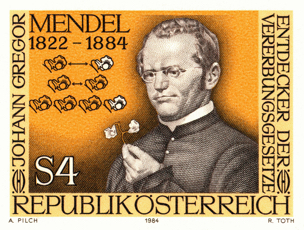
Eventually his favorite flower would be over-whelmed by his famous success with peas. On a four-shilling stamp from the Republic of Austria in 1984, thoughtfully commemorating the “Discoverer of the Laws of Inheritance” on the one-hundredth anniversary of his death, the engraver has lifted Mendel’s portrait directly from that old photograph, where he posed himself with a fuchsia. Alas, poor Mendel. The favorite flower, which he so intently studied in his hand, has been replaced by a couple of pea blossoms. His critical gaze now seems more perplexed by the exchange than anything. He looks for all the world as if to say, “They still don’t get me!”
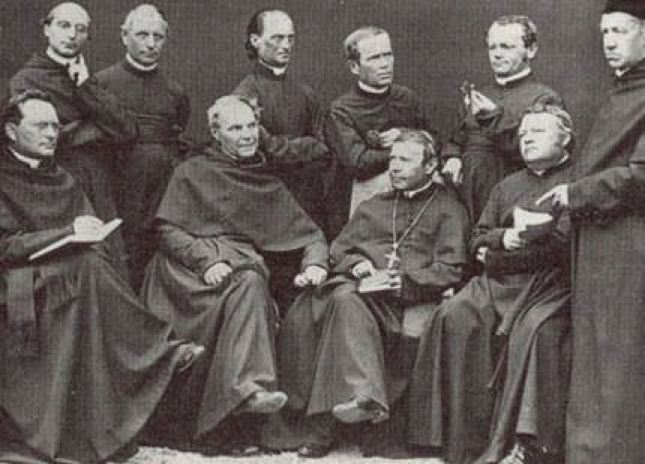
(Illustrations: 1. Photographic portrait of Mendel,1868; 2. Mendel’s birthplace at Heizendorf bei Odrau, now Hynčice, Czechia (➤ Wikipedia); 3. Mendel’s garden at the Augustinian Abbey of St. Thomas in Brünn; 4. Contemporary drawing of the new greenhouse at the Augustinian Abbey; 5. Detail: Mendel examines a fuchsia; 6. Mendel's coat of arms as Abbot of St. Thomas; 7. On a four-shilling stamp issued by Austria in his honor in 1984, a perplexed Mendel examines a sweet pea where his fuchsia should be; 8. Group portrait of the friars at the Abbey.)
[Originally published 2016-07-20]